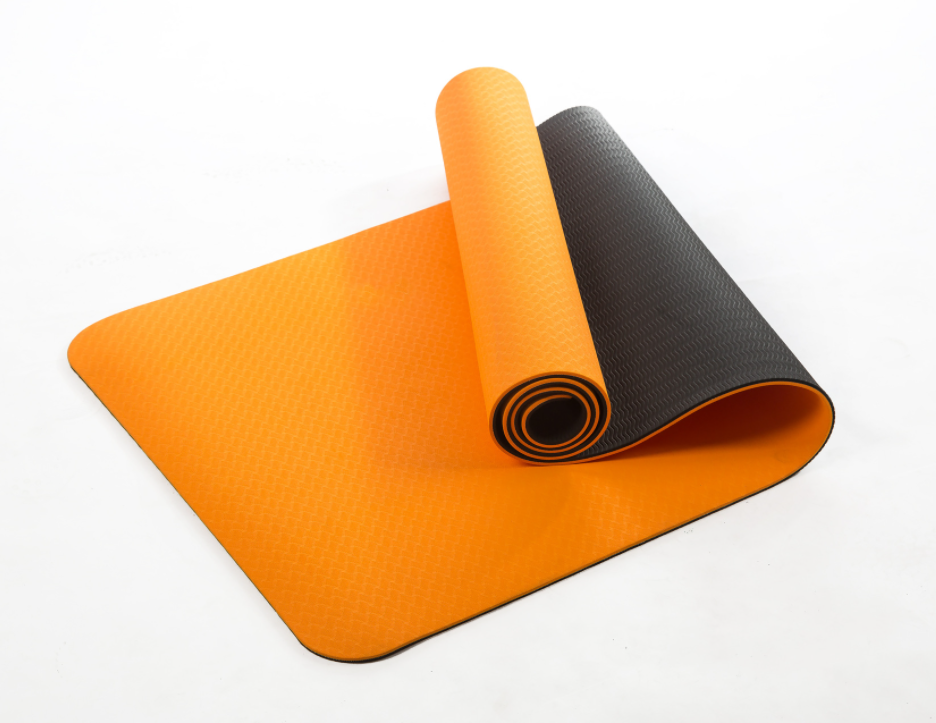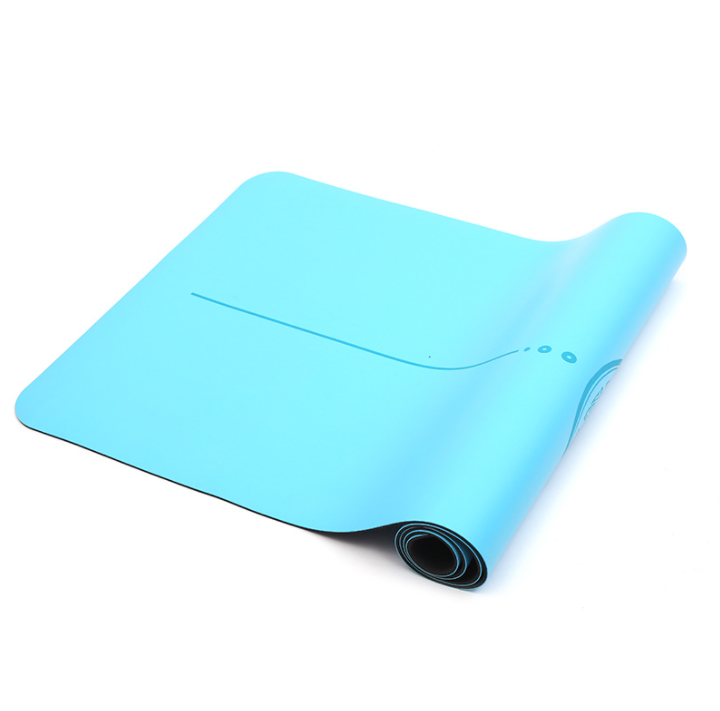Yoga mat materials, TPE yoga mats, PVC yoga mats, natural rubber yoga mats, environmentally friendly yoga mats, wholesale yoga mats, opening yoga studios, yoga equipment business, yoga mat selection guide

Comparison between TPE yoga mat and PVC yoga mat
Why is material selection crucial?
Customers who are sensitive to odors or pursue environmental protection may feel dissatisfied. 2. Non durable mats will increase the long-term maintenance costs of your studio. In a market where environmental awareness is increasing, choosing unsustainable materials may affect your brand reputation.
1. PVC (Polyvinyl Chloride) – The Traditional, Economical Choice
PVC is the most common and longest-standing yoga mat material, often referred to as the “standard” or “classic” mat.
Advantages:
-
Cost-Effective: Lowest production cost, ideal when budget is the primary concern.
-
High Durability: Very wear-resistant and long-lasting, suitable for high-traffic studios.
-
Good Grip: Provides reliable anti-slip performance, especially in dry conditions.
-
Variety of Options: Abundant colors and designs, easy to match brand visuals.
Disadvantages:
-
Environmental Concerns: Made from petroleum-based products, not biodegradable. Both the production process and disposal can negatively impact the environment.
-
Potential Toxins: Some inexpensive PVC mats may contain plasticizers like phthalates.
-
Closed-Cell Structure: Does not absorb water; sweat may form a slippery layer on the surface.
-
Initial Strong Odor: New mats typically have a noticeable “plastic smell” that takes time to dissipate.
Suitable for your business if: Your top priority is cost control, your clientele is price-sensitive, and you do not heavily emphasize eco-friendly attributes.
2. TPE (Thermoplastic Elastomer) – The Eco-Friendly Upgrade
TPE is a more modern material often marketed as an “eco-friendly” alternative. It acts like an upgraded version of PVC, addressing some of its drawbacks.
Advantages:
-
More Eco-Friendly: Free from PVC and chlorine, recyclable. The production process is cleaner.
-
Lightweight: Lighter than PVC and rubber mats, making it easier for clients to carry.
-
Good Grip: Provides reliable anti-slip performance.
-
Hypoallergenic: Typically non-toxic and odorless, suitable for people sensitive to smells.
-
Closed-Cell Structure: Moisture-resistant and easy to clean.
Disadvantages:
-
Moderate Durability: Not as durable as high-end PVC or natural rubber; may show signs of wear over time.
-
Higher Cost: More expensive than PVC mats, but usually cheaper than natural rubber mats.
-
Average Performance: Its grip might not match that of natural rubber in extremely sweaty conditions.
Suitable for your business if: You want to offer an eco-friendly upgrade at a reasonable price, appealing to a mid-market clientele focused on health and the environment.
3. Natural Rubber – The High-Performance, Professional Choice
Natural rubber mats are made from the sap of rubber trees and are the top choice for high-performance and professional yogis.
Advantages:
-
Superior Grip: This is its greatest advantage. Offers unparalleled anti-slip performance whether dry or drenched in sweat, making it ideal for hot yoga or Vinyasa flow.
-
Exceptional Durability: Extremely wear-resistant with a very long lifespan.
-
Eco-Friendly & Renewable: Sourced from a natural, renewable resource (though attention should be paid to sustainable forest management certifications).
-
Open-Cell Structure: Highly absorbent, effectively wicking away sweat to keep the surface dry.
Disadvantages:
-
Natural Rubber Allergy: Not suitable for people with latex allergies (affects approximately 1-6% of the population).
-
Weight and Price: One of the heaviest and most expensive options.
-
Distinct Rubber Odor: New mats have a strong natural rubber smell, which is harmless but takes time to dissipate.
-
Rougher Texture: Some users might find its texture too abrasive on the skin.
Suitable for your business if: You target a high-end, professional market, offer hot yoga or high-intensity classes, and your clients are willing to pay a premium for top performance and sustainability.

Comparison between TPE yoga mat and PVC yoga mat
|
Feature |
PVC | TPE | Natural Rubber |
|---|---|---|---|
| Cost | Low | Medium | High |
| Durability | High | Medium | Very High |
| Grip | Good when dry | Good | Excellent (both dry and wet) |
| Weight | Medium | Light | Heavy |
| Environmental Friendliness | Poor | Good (Recyclable) | Excellent (Natural & Renewable) |
| Main Disadvantage | Not eco-friendly, may contain toxins | Average durability | High cost, may cause allergies |
| Target Clientele | Budget-conscious, beginners | Eco-conscious users, general practitioners | Professional yogis, hot yoga enthusiasts |
Making the Final Decision for Your Business: Key Questions
Before placing an order, ask yourself these key questions:
Who is my target clientele?
-
Mass market/Beginners: PVC or TPE are good starting points.
-
Eco-conscious/Lifestyle consumers: TPE or Natural Rubber better align with their values.
-
Advanced practitioners/Professionals: Natural Rubber is the undeniable choice.
What are my primary class types?
-
Gentle Yoga, Yin Yoga: Have lower grip requirements; PVC or TPE are sufficient.
-
Vinyasa, Ashtanga, Hot Yoga: Must prioritize the superior grip of Natural Rubber.
What is my budget?
-
Balance the initial investment with long-term replacement costs. Although Natural Rubber mats have a higher unit price, their exceptional lifespan may result in a lower total cost of ownership.
What are my brand values?
-
If sustainability is core to your brand, choosing PVC might send the wrong message. TPE and Natural Rubber better reinforce your commitment to environmental protection.
Conclusion: There is no single “best” option, only the “most suitable” one.
-
Choose PVC if you need a cost-effective, durable solution, and environmental considerations are not a top priority.
-
Choose TPE if you want an excellent balance between eco-friendliness, performance, and price, appealing to modern consumers.
-
Choose Natural Rubber if you are committed to providing a top-tier professional experience for clients who pursue the best performance and value sustainability.
Ultimately, the smartest strategy might be to offer a variety of options. Provide PVC or TPE mats for beginners, and offer Natural Rubber mats as premium upgrades for advanced members or for retail. This approach can cater to diverse client needs while maximizing your market reach and revenue potential.
Ready to find the perfect yoga mat supplier for your business? today to discuss your bulk purchase needs and get a customized quote!


Leave A Comment